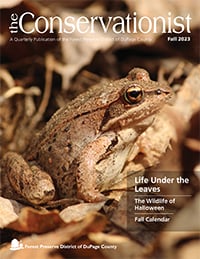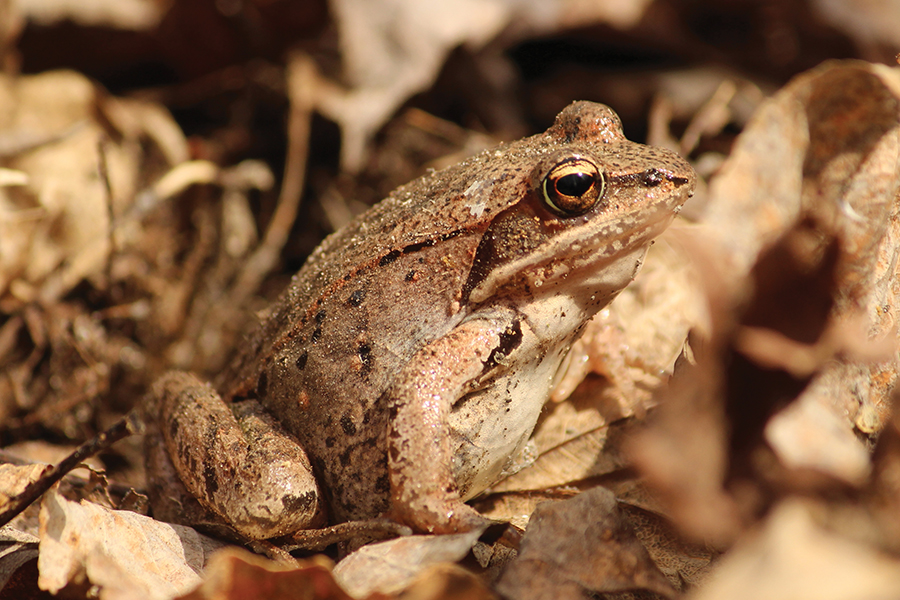
Conservationist Fall 2023
From the President

I sometimes think that fall is the most dramatic season in the preserves. What often starts off as a few summery days at the beginning of October can end with flurries before it’s through. But for as varied as the weather is, so is our lineup of ways to experience DuPage forest preserves this time of year.
For starters we’re celebrating “OAKtober” with several programs that feature these majestic trees. We’re also partnering again with Edward-Elmhurst Health for the “Take a Hike Challenge” with lots of ways to make the most of healthy time outdoors, including our fun “Lantern-Lit Halloween Hike” and “Pumpkin Night Hike for Families.” When you’re not in the preserves but in your backyard, this time of year can mean fall cleanup, but read “Life Under the Leaves” below to find out why leaving some of fall’s bounty in place can help local wildlife.
Behind the scenes, we’re working to keep our operations as green as the preserves. I’m proud to say that recently we joined the U.S. Environmental Protection Agency’s Green Power Partnership, a voluntary program designed to reduce the environmental impact of conventional electricity. The Forest Preserve District uses over 3.7 million kilowatt-hours of green power annually, enough to meet 105% of our electricity use. We do so by buying renewable energy credits, which helps us purchase 100% wind-generated energy to offset our conventional energy use. It’s a partnership I hope will show that green power is not only economically viable but also readily accessible. You can also read about our award-winning fleet of alternative-fuel vehicles below. Once again, our team has gained national recognition, a powerful reminder that when passion meets purpose, remarkable achievements are within reach.
I hope this issue of the Conservationist will get you in the mood for fall, and I look forward to meeting you on the trails!
Daniel Hebreard
President, Forest Preserve District of DuPage County
News & Notes
District Fleet Ranks Among Top in the Nation
The Forest Preserve District’s fleet was recently recognized as the No. 1 small fleet and No. 2 overall fleet in the Government Fleet magazine’s blind-judged Leading Fleets Award competition, which highlights the nation’s top-performing fleets regardless of location or budget.
The fleet also ranked No. 23 in the 100 Best Public Fleets in the Americas competition hosted by the NAFA Fleet Management Association, which recognizes peak-performing public and commercial fleet operations and encourages improvement and innovation within the fleet industry. This marks the 10th year in a row that the Forest Preserve District’s fleet made the list.
Currently 95% of the District’s fleet of more than 170 vehicles is powered by alternative fuels — liquefied petroleum gas, compressed natural gas, ethanol, biodiesel, hybrid electric, and electric — and the District is committed to achieving a full alternative-fuel fleet.
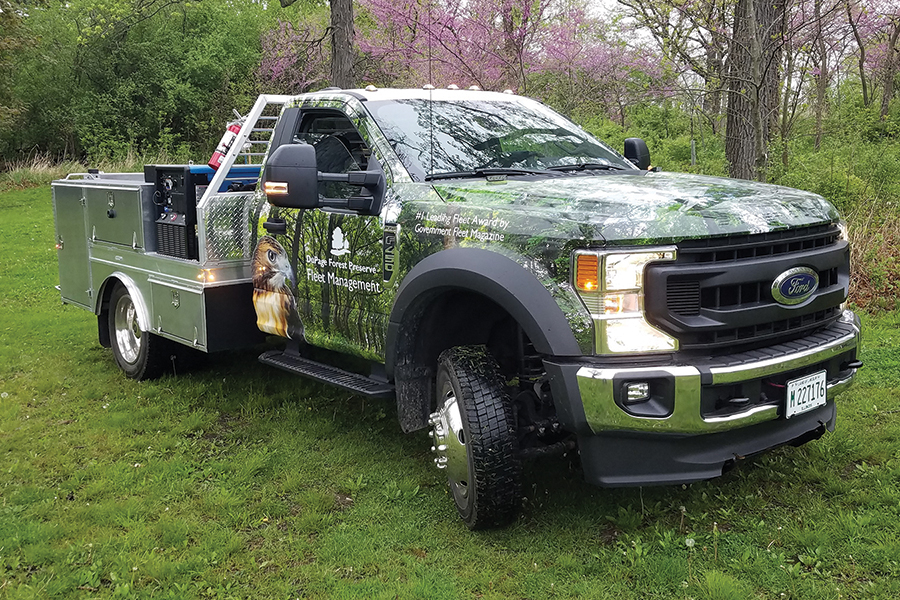
2024 Annual Permits on Sale Dec. 1
Annual permits for 2024 for private boating, archery, off-leash dog areas, and model crafts go on sale Friday, Dec. 1 at dupageforest.org under “Get a Permit.”
Permits will also be available Monday – Friday 8 a.m. – 4 p.m. through Visitor Services at 630-933-7248 or at Forest Preserve District headquarters at 3S580 Naperville Road in Wheaton.
Questions? Call Visitor Services, or use our convenient online chat. Just click on the blue and white bubble in the lower right corner.

Collections Corner
For years, an ornate 100-year-old iron sash lift that once adorned a linen closet window at Mayslake Hall had been in storage, waiting for the opportunity to be put back to use. Now that the exterior of the hall has been restored — including all the windows — this rare sash lift is ready to be reinstalled.
Several windows are missing similar sash lifts, though, and matching replacements no longer exist. This is where talented Forest Preserve District volunteers are stepping in to help.
The volunteer blacksmiths at Kline Creek Farm are using their talents to copy the sash lift and create new ones for the windows of Mayslake Hall. Visit the blacksmiths at the farm to check on their progress, and stop by the newly opened Mayslake Peabody Estate to see the end results in place!
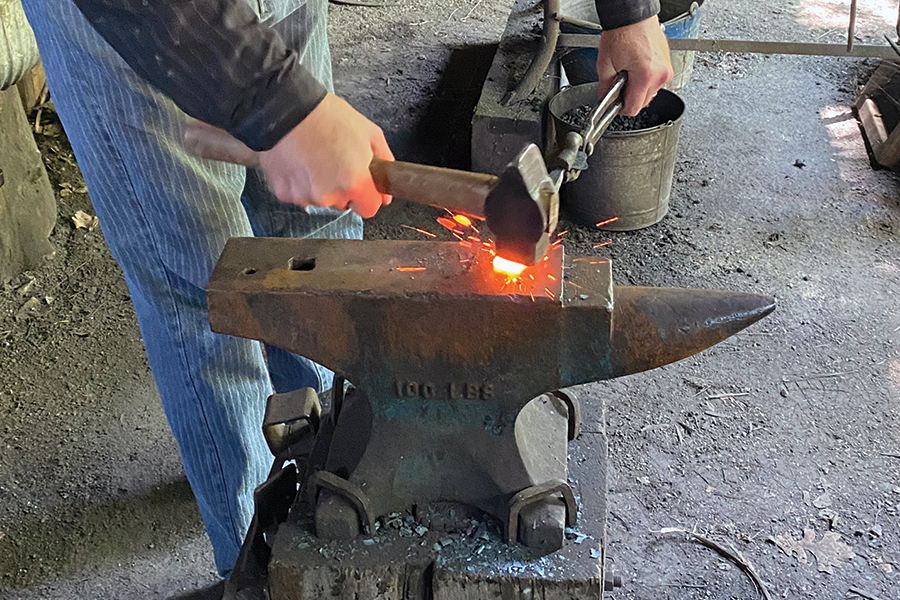
Because Deer Don’t Look Both Ways
A deer can run in front of your car anytime, but the risk goes up in fall, when these animals have one thing on their minds: finding mates. Because they’re not concerned about you, it’s up to you to watch for them.
- Slow down and watch for deer on the edge of the road, especially around curves and during dawn and dusk.
- Look for deer-crossing signs, which mark areas where collisions are likely.
- Don’t assume a deer will run off as you approach. It may bolt but then change direction without warning.
- If you see one deer, be on the lookout for more. They can move in pairs or larger groups.
- Don’t use your horn unless a collision looks inevitable. Distant noise may confuse the deer. Close noise may produce an extra burst of speed from the animal, but there really is no way to predict how a deer will respond.
- Do not swerve to avoid deer; it could result in a more severe crash. Slow to a stop and wait. Flash your headlights to encourage the animal to move.
- If your car has an automatic emergency braking system, don’t solely rely on it. It may not be designed to recognize large animals.
- If you are in a deer-vehicle accident, do not attempt to remove dead or injured deer. Contact local law enforcement instead.
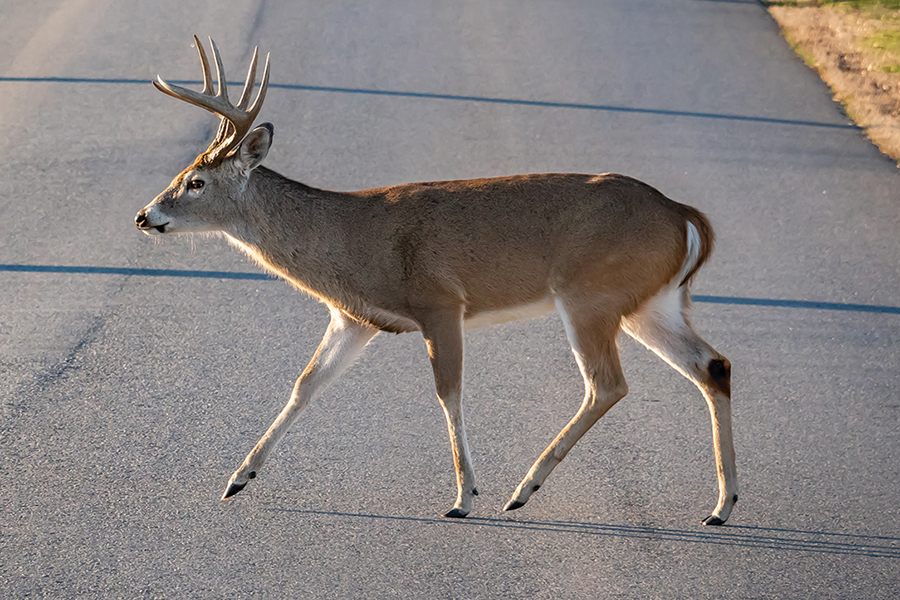
Thank You for Being a Friend
The Friends of the Forest Preserve District of DuPage County is a 501(c)(3) organization engaging the community in philanthropy to advance the mission and purpose of the Forest Preserve District. We are grateful to recognize those who donated $500 or more from April through June to the Friends or directly to the District.
Friends of the Forest Preserve District invites contributions to meet the greatest needs in our forest preserves and to support master plan projects. Currently, Friends has a focus on inviting gifts for the new Willowbrook Wildlife Center, an ambitious project that advances wildlife care, public engagement, and sustainability. For details, contact Partnership & Philanthropy at fundraising@dupageforest.org or 630-871-6400. To donate, visit dupageforest.org/friends or mail a check payable to the Friends of the Forest Preserve District of DuPage County to 3S580 Naperville Road, Wheaton, IL 60189.
Gift of $150,000 or More
Ronald R. Bork Fund of the DuPage Foundation
Gifts of $25,000 – $149,999
Illinois Clean Energy Community Foundation Stewardship Challenge Grant
Gifts of $10,000 – $24,999
BNSF Foundation
Gifts of $5,000 – $9,999
Domtar
Gifts of $2,500 – $4,999
Giving DuPage
Rice Lake Square
Gifts of $1,000 – $2,499
Anthony and Joyce Carey
Rosemary and Robert Carroll
Fidelity Charitable
Paul Herbert
Frances Holbrook and Elizabeth Rigsby
Mary Ann Mahoney
Pat and Lara Pappas
David and Amy Reeter
Robert R. McCormick Foundation
Schwab Charitable
V3 Companies, Ltd.
Susan Wachowski
Ellen Alekno Wier
Gifts of $500 – $999
The Conservation Foundation Thanks to Now Health Group
DuPage Area Moms
Fidelity Charitable
Diane and John Fiore
Carrie Kaplan
Manhard Consulting
Kay McNab
Kathleen Murphy
Lisa Savegnago and Ronald Johnson
Laura Shimkus
Georgia Wilson
Chet and Jeanette Wilszak
Life Under the Leaves
Many people look forward to fall. Temperatures begin to cool, daylight hours become shorter, and leaves stop producing chlorophyll before turning brilliant colors and falling to the earth. So what do leaves do once they stop turning sunlight into food for the trees? They become leaf litter!
Unlike discarded water bottles, cans, or plastic bags, leaf litter teems with life, provides shelter for plants and animals, and is probably the most biodiverse area in any forest preserve or backyard. It also contributes to the creation of new soil.
Soil needs decay, but not all leaves decay equally. Some, such as maples, do so relatively quickly. Oak leaves, on the other hand, are slow to break down due to their molecular structure. (If you’ve ever walked through an oak forest in the spring, you may notice a lot more leaves on the ground than in other places.)
Regardless of the leaf, decomposition could not take place without the help of local invertebrates, bacteria, and fungi. Invertebrates — creatures such as worms and insects that don’t have backbones and some that are too small to see with the naked eye — are the first to start the process. These critters begin to munch on leaves and other organic material found in the litter and turn it into smaller pieces.
Bacteria and fungi then take over, further breaking things down into soil. These organisms are the primary agents of decay and soil creation, but as a whole, decomposers allow nitrogen in the leaves to be recycled back into the soil for plants to take up through their roots. This doesn’t just benefit the tree where the leaves originated but any plant that grows below the canopy.
As all this decomposition is going on, there’s another world of arthropods living underneath the leaf litter, critters like centipedes, beetles, worms, moths, and butterflies. Some live there only while larvae or eggs; others, only while adults. The eastern tiger swallowtail, for instance, overwinters as pupae under the leaves. Question mark butterflies, ladybugs, and fireflies overwinter as adults.
Slugs spend most of their life in the leaf litter. Mostly active at night, they not only break down dead and decaying materials but also act as pollinators. Just like pollinating insects, they’re attracted to the sweet smell of flowers’ nectar and transfer from flower to flower any pollen that sticks to their bodies. They are known especially to pollinate wild ginger and large-flowered trillium.
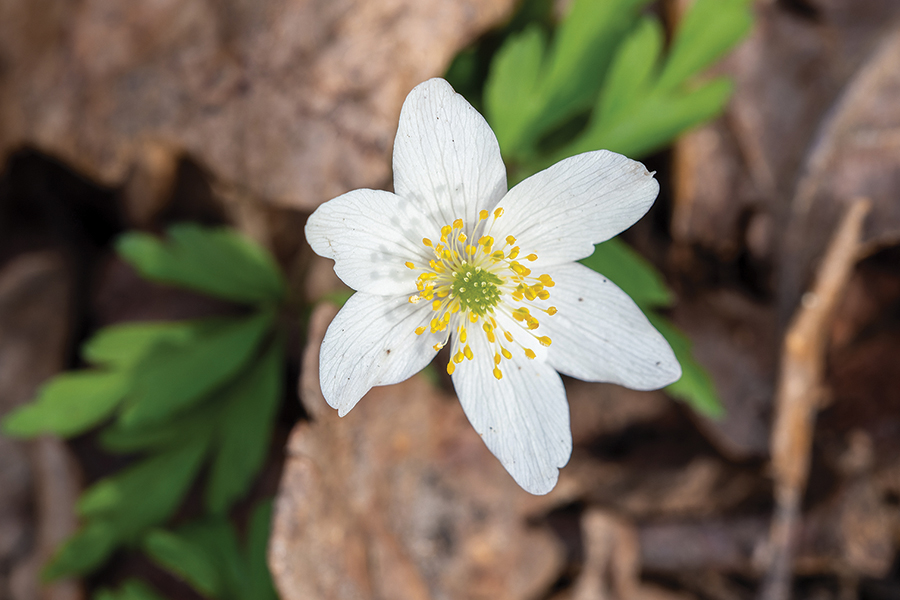
Decomposing leaves return nutrients to the soil that fertilize spring flowers.
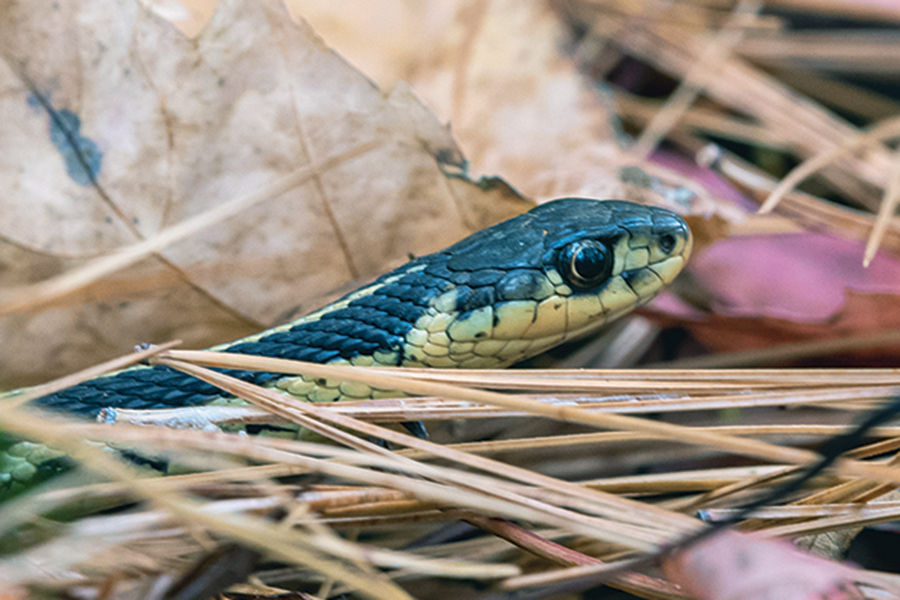
Leaf litter provides insulation for snakes that hibernate among rocks and soil on the forest floor.
Snakes, such as eastern garter snakes, spend a lot of time hiding in leaf litter, where they eat earthworms, slugs, snails, and insects found on the forest floor. In winter, they hibernate in natural burrows insulated partly by leaves.
As winter winds down and temperatures begin to creep up, plants begin to wake up for the spring, and leaf litter is the perfect nursery for young plants and trees. The leaves create a microclimate that protects sprouting seedlings from potentially damaging winds and temperatures. Plants can begin to emerge under the leaf litter before the last frost, getting a jump on the growing season.
Leaf litter is also a critical component to the overall water-holding capability of woodlands and planted areas. Decaying leaves and twigs not only keep the soil moist but also delay water runoff during heavy rains. This latter aspect allows the water to slowly soak in, where soils and rocks can filter out pollutants before releasing the water back into local underground aquifers.
The forest floor isn’t the only place leaf litter is beneficial. When leaves fall into streams, they create leaf packs, bunches that accumulate behind submerged rocks or branches. After being in the water for just a few weeks, the leaves turn slimy from colonizing fungi and bacteria. In healthy streams this creates important habitat for macroinvertebrates such as dragonflies, damselflies, sowbugs, caddisflies, and mayflies — aquatic insects that spend the early parts of their lives in the water and make up vital building blocks in the food webs of stream ecosystems.
Next time you are walking in the woods (or looking out your own window) and see the ground blanketed in leaf litter, think about all the benefits those leaves give us.
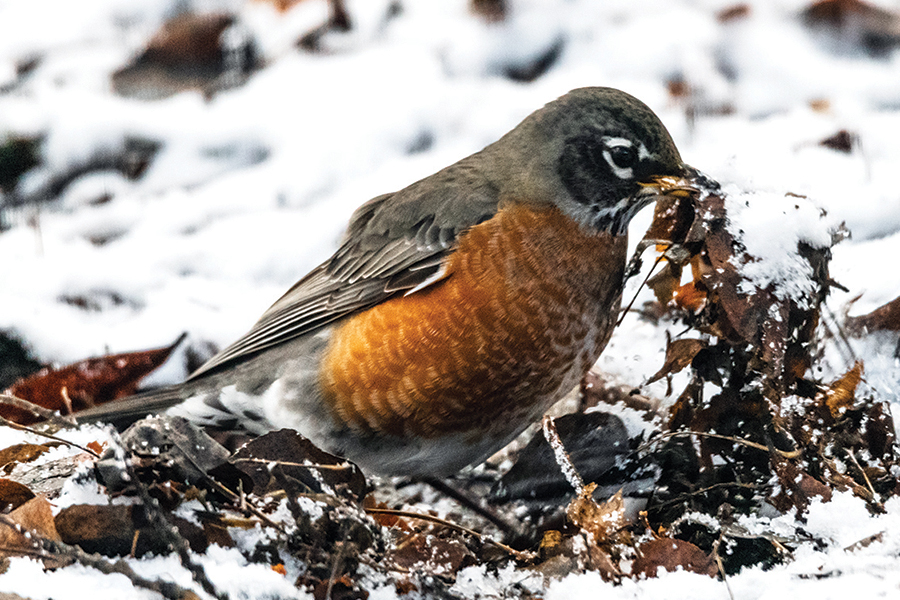
Leaf litter not only shelters insects that feed American robins through winter but also provides the birds with nesting material in spring.
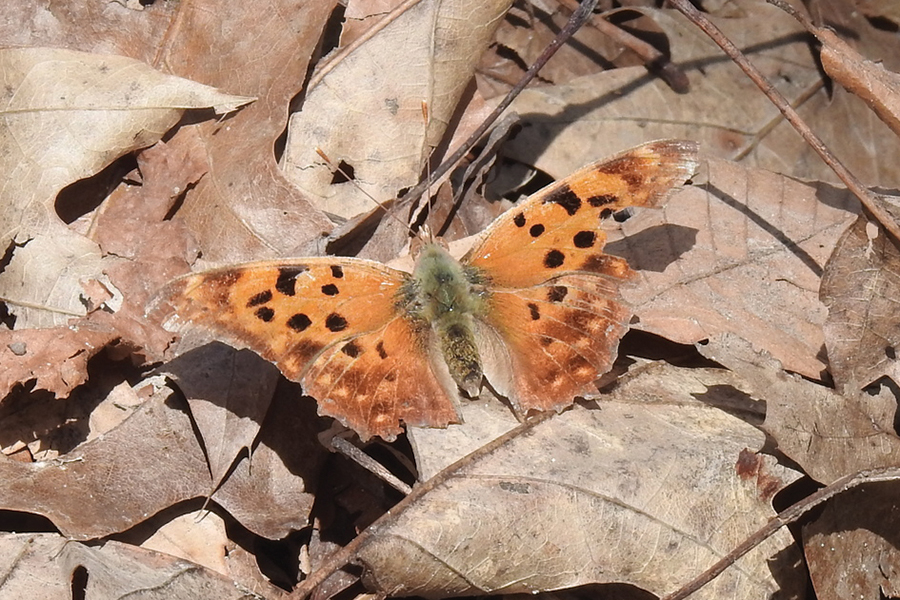
Letting leaves lie creates places for overwintering insects such as ladybugs, fireflies, and butterflies, including this question mark.
The Wildlife of Halloween
As we approach that fun and spooky time of Halloween, certain types of wildlife come to mind, mostly as a result of legend or myth. Most have been connected to stories of witches, goblins, vampires, and other monstrous and feared creatures, but that doesn’t mean we need to be wary of these species today. We just need to get past the “creepy” factor to appreciate them.
Spiders
Spiders are abundant and seem to be one of the most-feared invertebrates in the world, which makes them creepy candidates for the Halloween scene. Some folks have theorized that you’re always about 7 feet from a spider wherever you go in the world (a notion that can be a bit unnerving if you’re not a fan). The distance may vary depending on the habitat you’re in (parking lots offer little usable spider space unless there are cracks in the pavement), but you are certainly never too far from one.
Even though the presence of spiders can make people shudder, spiders offer many services. One study revealed that the world’s spiders eat 400 to 800 million tons of insects each year. That’s a lot of extra bugs that would be flying and crawling around if we didn’t have spiders. (Now that’s a scary thought!)
Spiders might also be associated with Halloween because their webs are more visible this time of year. Some web-building spiders spend summer growing and hiding from other predators, but by late summer and early fall, they’re large enough to protect themselves and are able to build large webs to catch prey.
One common spider typically seen more frequently this time of year is the spined micrathena. People occasionally encounter these spiders by walking into webs when venturing off trail. Sometimes people think they’ve been bitten, but realistically they probably saw or felt the spider crawling on them and swiped it away only to be harmlessly jabbed by one of the spines on the arachnid’s abdomen.
Owls
Since we tend to see and hear owls more regularly this time of year, it’s no surprise they’re included in the Halloween canon.
Like other owls in the Midwest, male great horned owls usually start setting up their territories in October. Most mate for life, yet in fall great horneds still loudly call to each other as part of their regular courtship routine.
This early attempt at nesting is indicative of great horned owls because they’re large birds that invest more time in the parental care of young, specifically in teaching hunting skills. In this area they often incubate nests through the harshest parts of winter, which makes fall and winter a great time to look for interesting owl interactions in the forest preserves. Make sure to keep your distance, though. It is rare, but occasionally great horned owls have been known to attack humans, although this usually happens when people approach a nest or a territory too closely.
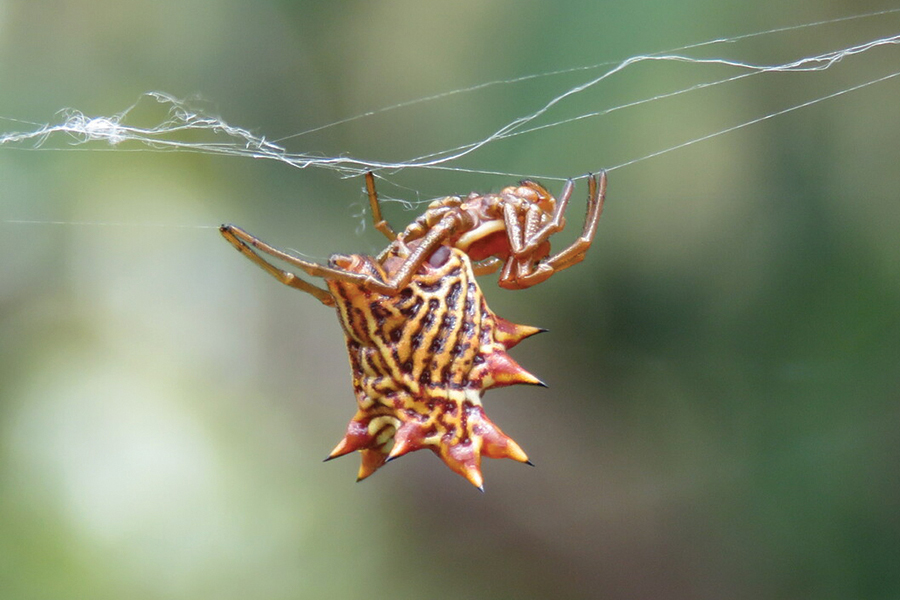
Spined micrathena (Micrathena gracilis)
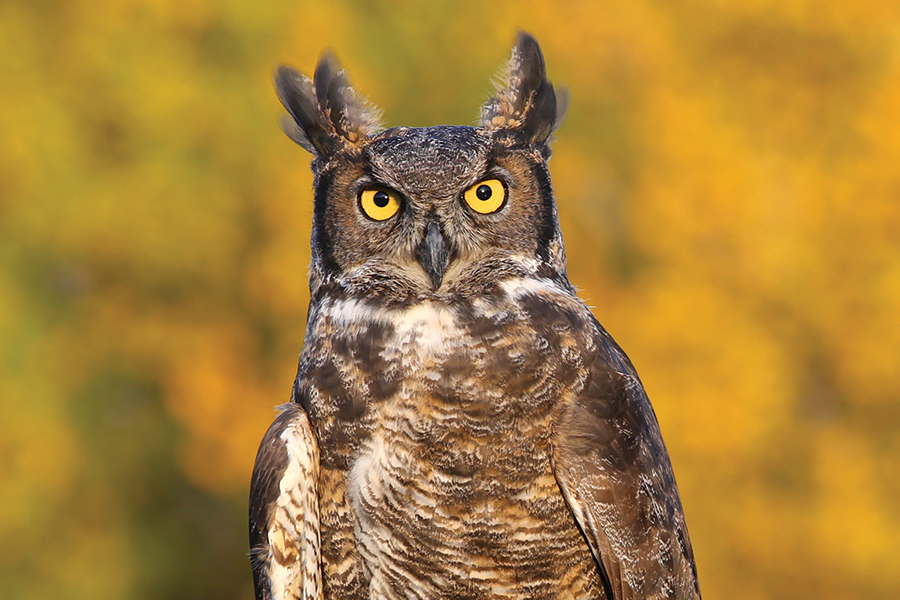
Great horned owl (Bubo virginianus)
Snakes
Some of the most misunderstood members of the Halloween story are snakes. Historically they were seen as a symbol of power in witchcraft (think Voldemort’s companion in the Harry Potter series). They were also seen as animals to be eradicated from the landscape. (St. Patrick was mythically known for driving the serpents from Ireland, but there’s no fossil evidence to show that snakes ever existed on the island in the first place.)
It may be difficult for some to believe, but there are people who adore snakes. In some instances this can create conservation issues because native snakes continue to be illegally collected for the pet trade. Since snakes can also be victims of predation by high populations of raccoons and skunks, any wild collection of these species can lead to further population losses.
A common snake that people can see basking along trails at this time of year is the Dekay’s brown snake. During warm temperatures in the fall, this species can be observed well into September and October and occasionally into November. (Don’t worry, though. Like other DuPage snakes, the Dekay’s is not venomous.)
Bats
Bats may be the quintessential Halloween wildlife species since they’re so closely associated with vampires. The influential novel by Bram Stoker contributed a great deal to the myth, but although there are real species of blood-feeding bats in Central and South America, their hosts are largely livestock and rainforest mammals.
In DuPage County and Illinois, bats are strictly insect eaters that play a huge role in the ecosystem by digesting roughly 1,000 insects per hour per bat. Their main foods consist of moths, beetles, crickets, mosquitoes, and chinch bugs to name a few, but contrary to popular belief, they eat more moths than mosquitoes. Since many of these insects can be agricultural or public health pests, bats help to save billions of dollars each year.
The big brown bat is one native species that is observable in our area at dusk in summer through early fall in open areas near woods or over ponds and streams. Be cautious, though; for all of their benefits, bats can carry rabies.
So enjoy the spooky stories of Halloween this fall, but remember that the real animals behind these tales play valuable roles in DuPage County forest preserve habitats.
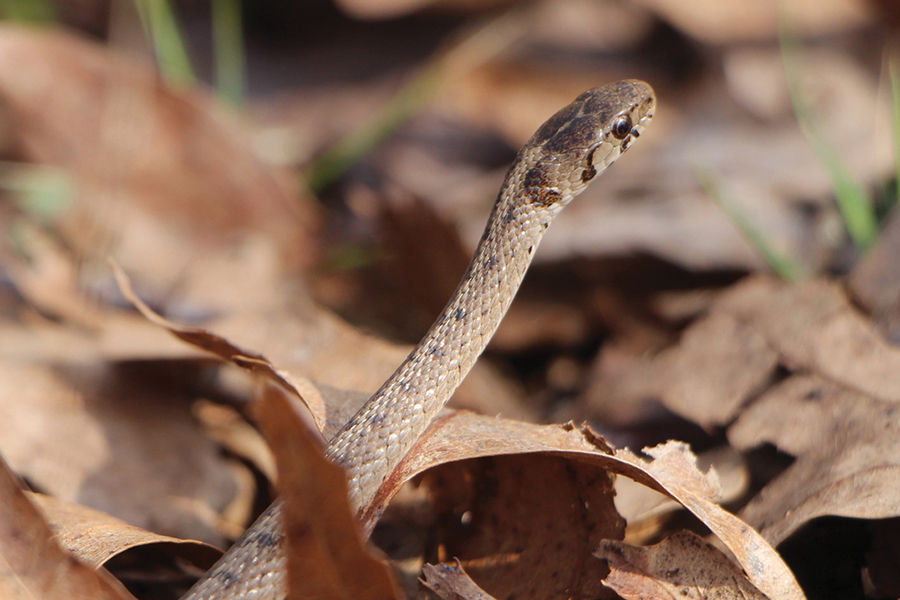
Dekay’s brown snake (Storeria dekayi)
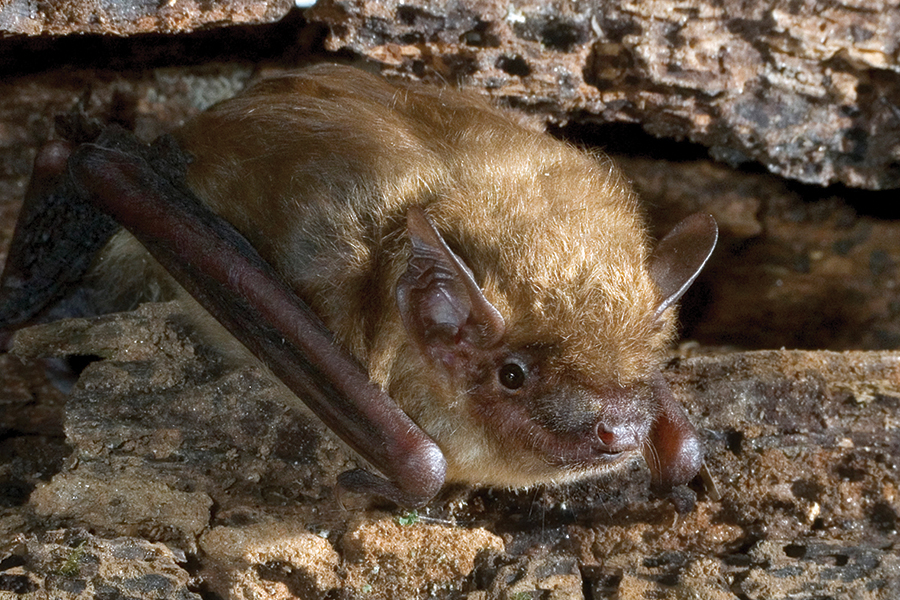
Big brown bat (Eptesicus fuscus)
